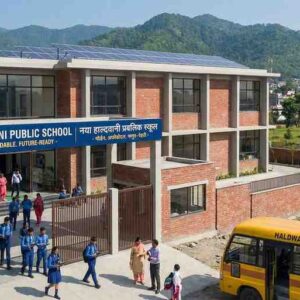In a landscape dominated by debates over the merits of large versus small educational institutions, medium-sized schools in India are emerging as pivotal players in providing quality education. These institutions, often overlooked in the grand narratives about educational infrastructure, offer a unique blend of personalized attention and diverse opportunities, positioning them as ideal environments for holistic student development.
Striking the Perfect Balance
Medium-sized schools in India are proving that when it comes to education, balance is key. These schools manage to blend the intimate, personalized teaching approach found in smaller institutions with the broader curricular options typically available in larger schools. This balance allows for tailored educational experiences that cater to individual student needs while still offering a wide array of extracurricular activities and specialized courses.
Optimal Student-to-Teacher Ratios
One of the standout features of medium-sized schools is their ability to maintain optimal student-to-teacher ratios. These ratios ensure that each student receives enough attention and support from teachers, significantly enhancing the learning process. Research indicates that such environments can lead to higher academic achievement and better student engagement, crucial metrics for educational success.
Enhanced Community Feel with Broad Opportunities
Medium-sized schools foster a strong sense of community—students are not just another face in the crowd. This community atmosphere supports psychological well-being and boosts student confidence, factors that are often diluted in larger educational settings. Simultaneously, these schools are large enough to offer a variety of sports, arts, and technology programs, providing students with the necessary platforms to explore and excel in their areas of interest.
Agility in Educational Innovation
With fewer bureaucratic hurdles than their larger counterparts, medium-sized schools often exhibit greater agility in implementing educational innovations. Whether integrating new technology in the classroom or adopting the latest pedagogical strategies, these schools can pivot and adapt quickly to the evolving educational landscape. This responsiveness is increasingly recognized as a critical component of high-quality education in the 21st century.
The Economic Efficiency of Medium-Sized Schools
From an economic perspective, medium-sized schools often provide a more cost-effective education solution. They manage to keep operational costs lower than large institutions while still offering comprehensive educational programs. This efficiency makes quality education more accessible to a broader segment of the population, an important consideration in a diverse country like India.
Conclusion: The Ideal Educational Model for India’s Future
As India continues to develop and diversify its educational offerings, medium-sized schools are positioned to play a crucial role. Their ability to provide a balanced, responsive, and community-oriented educational environment makes them not just viable but preferable options for parents and students seeking comprehensive and accessible education.
These schools challenge the prevailing norms and showcase that sometimes, the middle path offers the best of both worlds. As such, medium-sized schools are not merely educational institutions; they are dynamic environments where the next generation of India’s leaders, thinkers, and innovators are being shaped.











